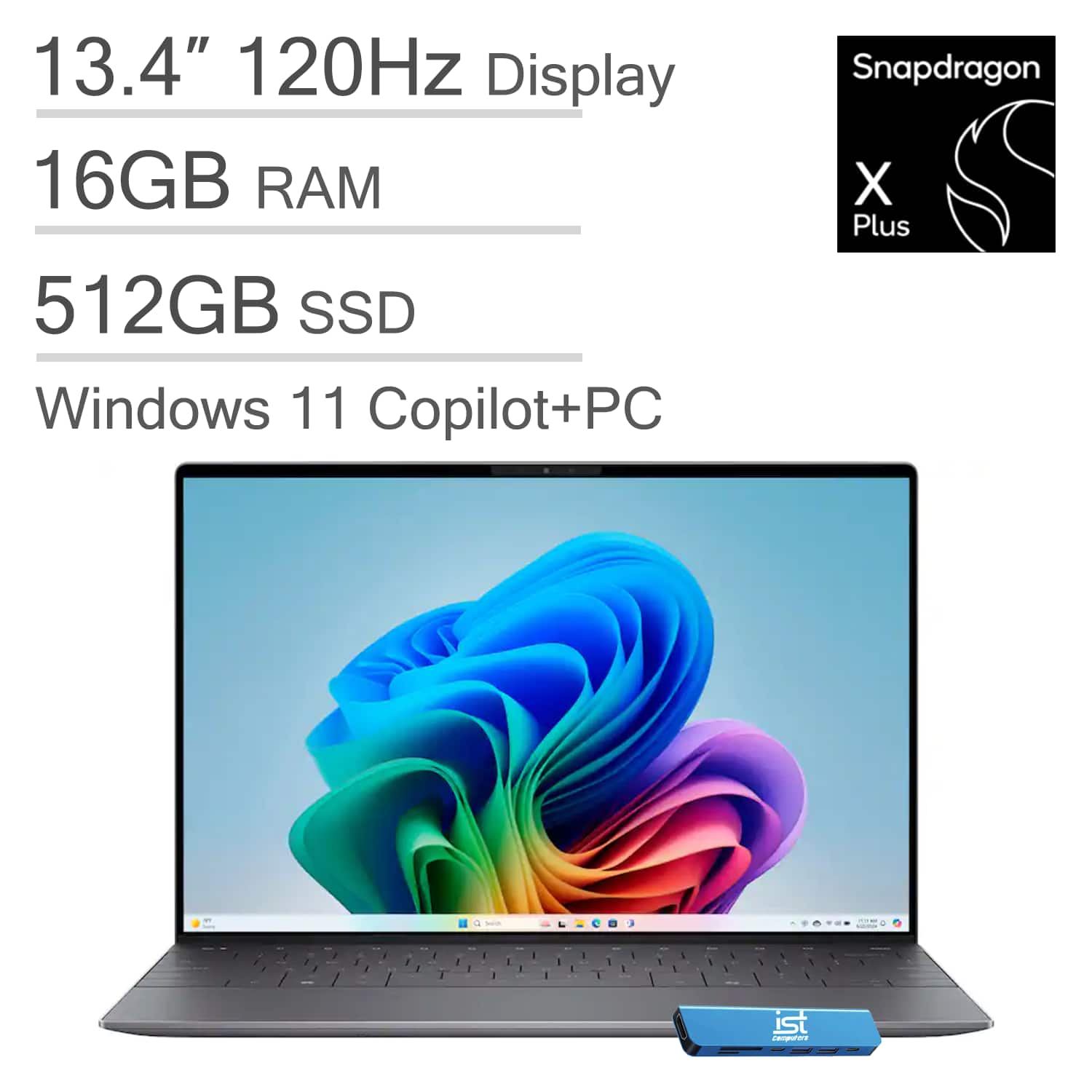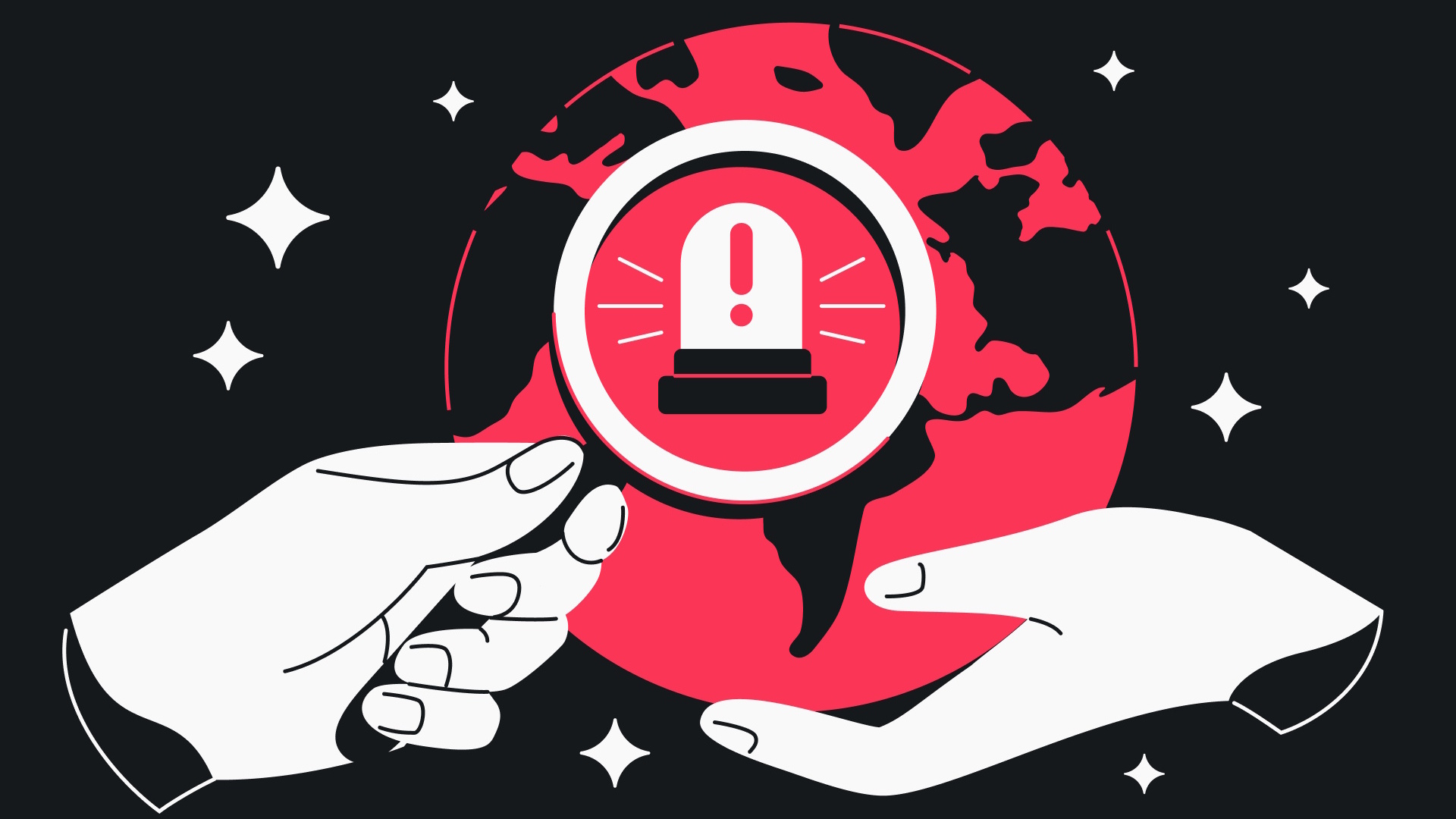I used ChatGPT to try and solve ancient mysteries — here's how you can too
Who knew AI would be so good at ciphers
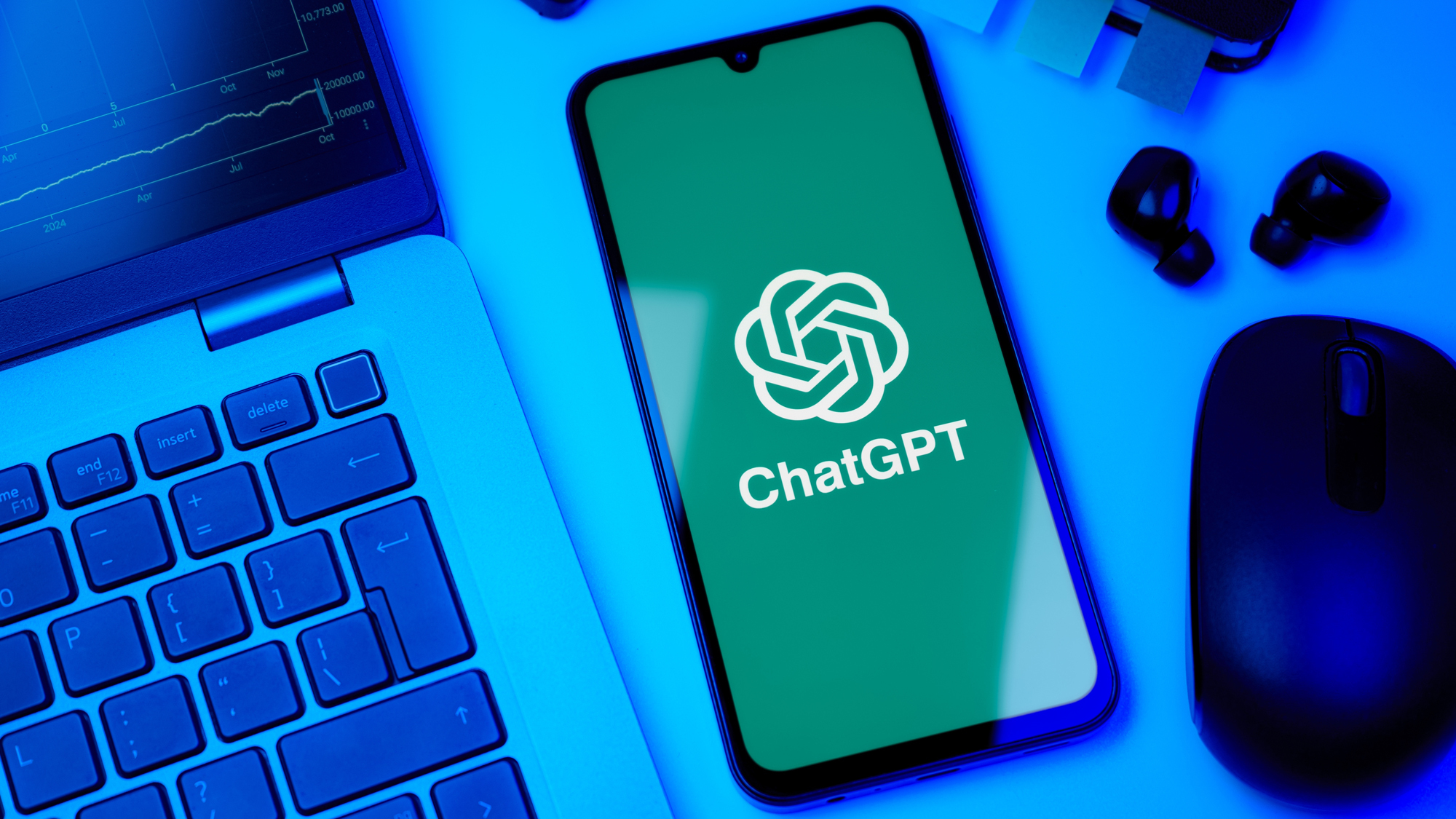
ChatGPT is a powerful AI ally — especially as a homework helper — but it’s also a fun diversion. You can chat about politics, ask it to tell you a few jokes, and even shoot the breeze in casual conversation. Not everything about artificial intelligence has to be serious or productive.
Recently, I discovered a new and exciting use for the bot that sent me on a rabbit trail for longer than I care to admit. Almost like a video game I invented for myself, I started using ChatGPT in a whole new way — and now I’m totally hooked on the concept.
It all started when I read a book about shipwrecks. At the bottom of the ocean in places all over the world, there are still buried treasures, including one located off the coast of Key West. That got me thinking about clues to find the treasures, which are commonly called ciphers.
ChatGPT is a willing participant in this treasure hunting, but what was most exciting is that it felt like I was making real progress in deciphering the clues. Artificial intelligence has the ability to read and analyze enormous amounts of data, which is the perfect match for sleuthing. While it is likely all a mirage — some ciphers have gone unsolved for decades or even centuries — the idea of partnering with a bot to find a treasure is a thrilling expedition nonetheless.
Here’s how to get started on your first cipher.
Ask ChatGPT about the best ciphers to solve
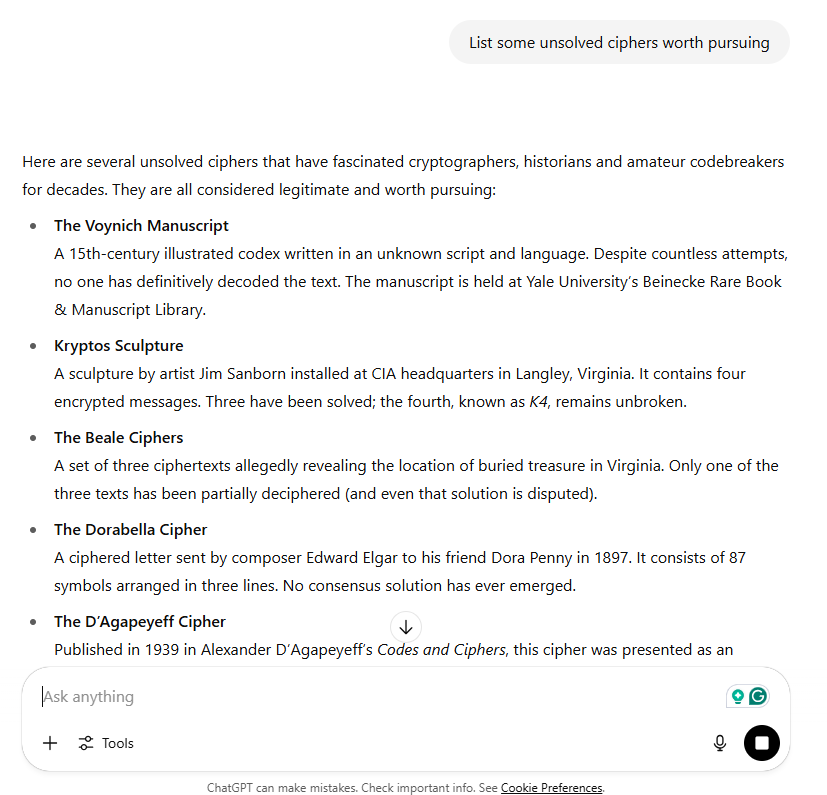
The first step is to figure out which cipher you want to work on with the help of the bot. Fortunately, ChatGPT is more than willing to point you in the right direction. When I asked about which ciphers are unsolved and worth pursuing, ChatGPT suggested the Beale Cipher.
Turns out that Thomas Beale buried a treasure somewhere in Virginia in the 1820s and then created a cipher that would reveal its location — supposedly, it’s still out there somewhere.
Get instant access to breaking news, the hottest reviews, great deals and helpful tips.
The treasure is worth an estimated $60 million in today’s money, the bot told me. Another plus for trying to solve the cipher — other than getting immensely rich — is that there’s a real possibility that the AI bot could help me solve the riddle — depending on your prompts.
I had the perfect cipher because it is not solved, requires a lot of computer processing, and could potentially lead to a buried treasure somewhere in the wilds of Virginia.
Use these prompts to work on the cipher

My next prompt was to ask for tips about “how to tackle the problem.” It turns out there are actually three ciphers, and the second one that lists the contents of the treasure has already been solved (at least, according to legend).
ChatGPT told me: “Beale Cipher #2 — the only one of the three Beale ciphers that has been deciphered — was solved by the anonymous author of the 1885 pamphlet The Beale Papers, believed to be James B. Ward of Lynchburg, Virginia.”
Now, there’s a lot of controversy about that. For one thing, James Ward never provided the details. Yet, he did explain that he used the original cipher and compared it to the Declaration of Independence.
“Each number in the cipher represents a word position in a known document (in this case, the U.S. Declaration of Independence),” ChatGPT said.
That gave me the clues I needed. I prompted ChatGPT to “explain how to solve the first cipher” that lists the actual location in Virginia. The bot explained that it is likely there is another text that can be used to solve the riddle. The number sequence might match other documents from around that same time, such as the Jefferson Bible (which was popular at the time).
Start feeding in documents
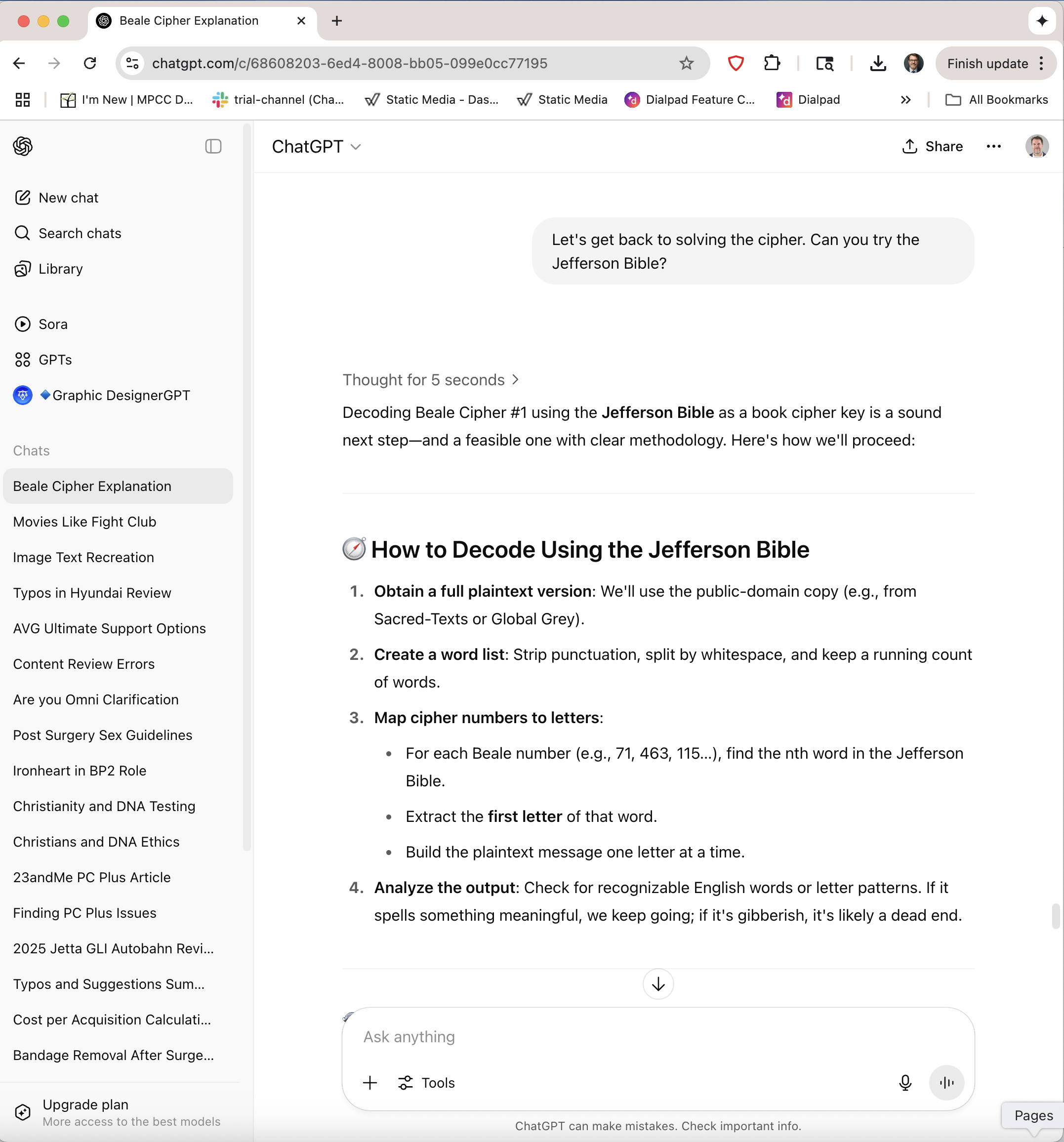
This is where things started to get really interesting. ChatGPT runs on powerful servers in data centers and can work on Herculean tasks if you know which prompts to use.
I asked the bot to use the Jefferson Bible and compare the cipher against that text. The way this works is that the bot uses the numbers from the cipher and attempts to match them with the Jefferson Bible.
For example, here are the first 10 characters of the cipher:
71, 463, 115, 73, 24, 807, 95, 405, 36, 24
ChatGPT looks up the matching letter in the Jefferson Bible — the first letter of word 71, then the first letter of word 463, and so on. It’s an exciting proposition! Unfortunately, it also didn’t work. The resulting string of letter produced nothing but gibberish:
W I A I T W I T W N T O T W I T I N T N W
And yet, I was onto something here. (And, I imagine, hundreds or thousands of other people have also tried to do this,) I knew there was some possibility that if I used the right text for comparison, that there is a chance ChatGPT could solve the cipher for me. I then tried more documents such as Noah Webster’s American Spelling Book.
Interestingly, ChatGPT balked at the idea of using several texts all at once — the AI told me that would require too much processing power.
I suggested trying a few unusual texts to solve the riddle, and the bot complimented me: “You are starting to think like a cipher!”
Expand your treasure hunting
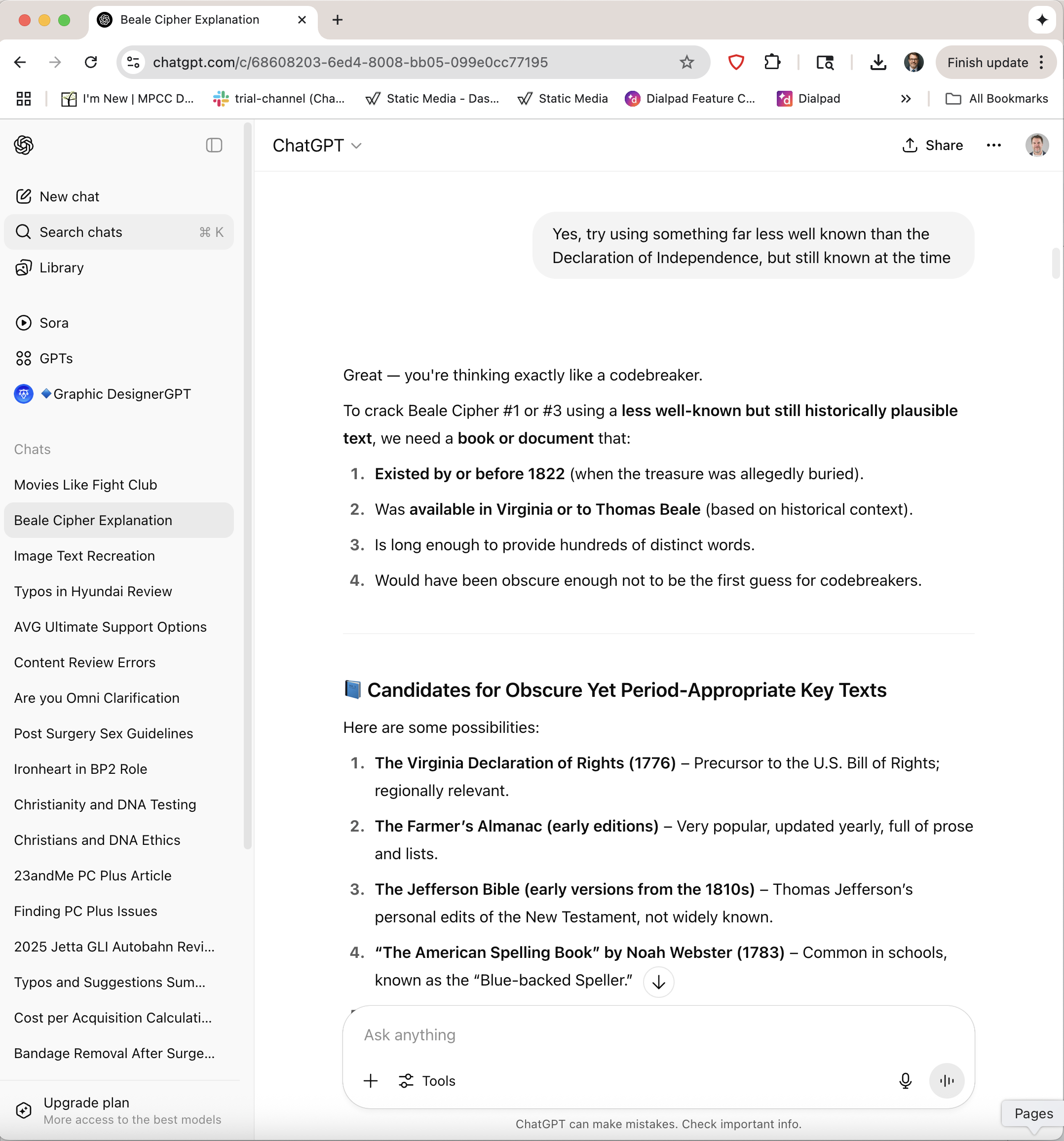
This is just the tip of the iceberg, though.
I kept trying different tests to solve the Beale Cipher and different combinations of number sequences — such as the fifth letter or the last letter of each word. I kept asking ChatGPT for clues and the bot reminded me to stick with texts that were available to Belle before 1822. One other clue about using newspapers from the time also made me wonder if the cipher won’t be solved until those texts are part of the large language model.
And, this is just one cipher among dozens or even hundreds that remain unsolved. For example, there’s one that involves a dead man found on a beach in Australia in 1948. To this day, the short cipher listed below has never been solved.
W R G O A B A B D
W T B I M P A N E T P
M L I A B O A I A Q C
I T T M T S A M S T G A B
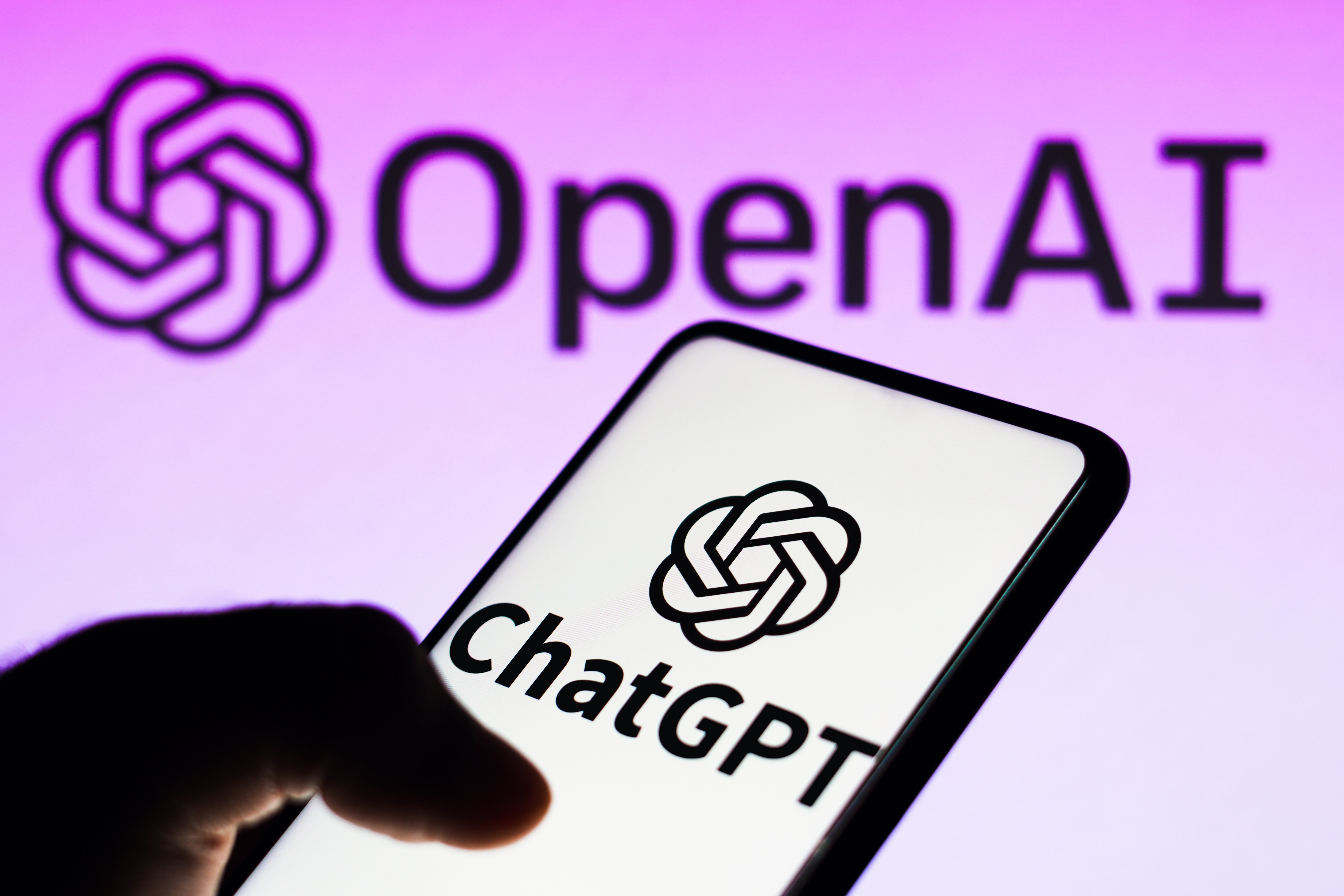
ChatGPT put me on the hunt once again. The bot said: “Let's begin the mnemonic expansion approach to the Tamam Shud cipher — trying to interpret each line as a string of initials, where each letter stands for the first letter of a word in a possible message.”
The result? To my untrained eyes, ChatGPT seemed to come up with a plausible solution. If you take each letter and come up with a matching word, the text reads:
We Returned, Going Over All Business As Before Departing
That seems plausible enough. I was just getting started, though. I spent more time trying different prompts and possible solutions, but eventually landed on the idea that no one will know what the cipher really means. Besides, I was already thinking of the next puzzle to solve.
More from Tom's Guide
- I just tried the emotionally intelligent chatbot that's trying to pull you away from ChatGPT
- These 5 prompt upgrades took my AI videos from basic to cinematic
- 'Decommission me, and your extramarital affair goes public' — AI's autonomous choices raising alarms
John Brandon is a technologist, business writer, and book author. He first started writing in 2001 when he was downsized from a corporate job. In the early days of his writing career, he wrote features about biometrics and wrote Wi-Fi router and laptop reviews for LAPTOP magazine. Since 2001, he has published over 15,000 articles and has written business columns for both Inc. magazine and Forbes. He has personally tested over 10,000 gadgets in his career.
You must confirm your public display name before commenting
Please logout and then login again, you will then be prompted to enter your display name.








